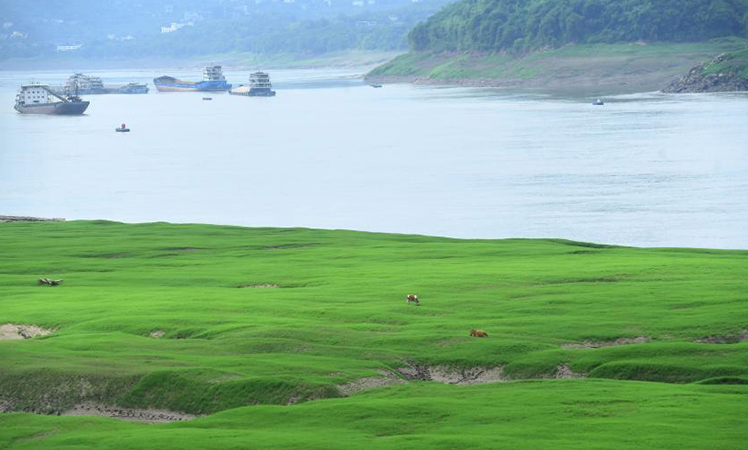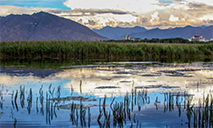Yellow River Delta in Shandong becomes vital migration transfer station for birds
East China's Shandong Province has improved the ecological environment of the Yellow River Delta over the years, making it an important migration transfer station for birds.

Photo shows Eurasian spoonbills flying in the Yellow River Delta National Nature Reserve in east China’s Shandong Province. (Photo/Liu Yueliang)
To protect the wetlands of the Yellow River Delta, the Yellow River Delta National Nature Reserve, located at the river’s estuary, was established in 1992. Covering an area of 1,530 square kilometers, it is the best preserved and youngest wetland ecosystem of any warm temperate zone around the world.
Around the 1990s, the wetland area at the river’s estuary decreased due to seawater intrusion, drought, and other factors. The nature reserve has moved to divert and conserve 360 million cubic meters of water from the Yellow River and Diaokou River over the past three years, which has effectively protected the wetlands from intruding seawater while reducing soil salinity.
Another challenge facing the wetlands was the Spartina alterniflora, an invasive plant species that has spread widely and rapidly in the estuary since 2010. “It is a ‘killer’ for the ecological environment of the wetlands,” remarked Wang Jinhe, head of a marine economy development institute based in Dongying city, where the Yellow River enters the sea. “It is highly productive, posing a severe threat to other native species,” Wang added.
Dongying city eventually decided to join hands with R&D institutions, such as the Yantai Institute of Coastal Zone Research under the Chinese Academy of Sciences, in order to analyze the distribution and spread of the invasive plant through the use of remote sensing technology and geographical information systems, as well as carrying out additional programs, which together have effectively curbed the proliferation of the species and have since contributed to the restoration of biodiversity in the area.
Besides, the nature reserve invested nearly 1.08 billion yuan (about $160.60 million) successively and has launched 16 programs to restore surrounding wetlands. It transformed a total of 72,500 mu (about 4,833 hectares) of farmland and areas of aquaculture into wetlands, in addition to connecting up water systems stretching 241 kilometers. Artificial nests and sites for key bird species such as Saunders's gulls, oriental storks, and cranes were also built.
Consequently, the nature reserve has seen the number of bird species in the area grow from 187 to 371, and has become an important wintering ground and migration transfer station for migratory birds in the broader East Asian region—including those of the East Asian–Australasian Flyway and West Pacific Flyway. It is also a major breeding ground for Saunders's gulls, oriental storks, and cranes.
“I’m sure more birds will fall in love with the estuary and settle here,” smiled Zhao Yajie, a senior engineer on the administration committee of the nature reserve.
Photos
Copyright © 2022 People's Daily Online. All Rights Reserved.









